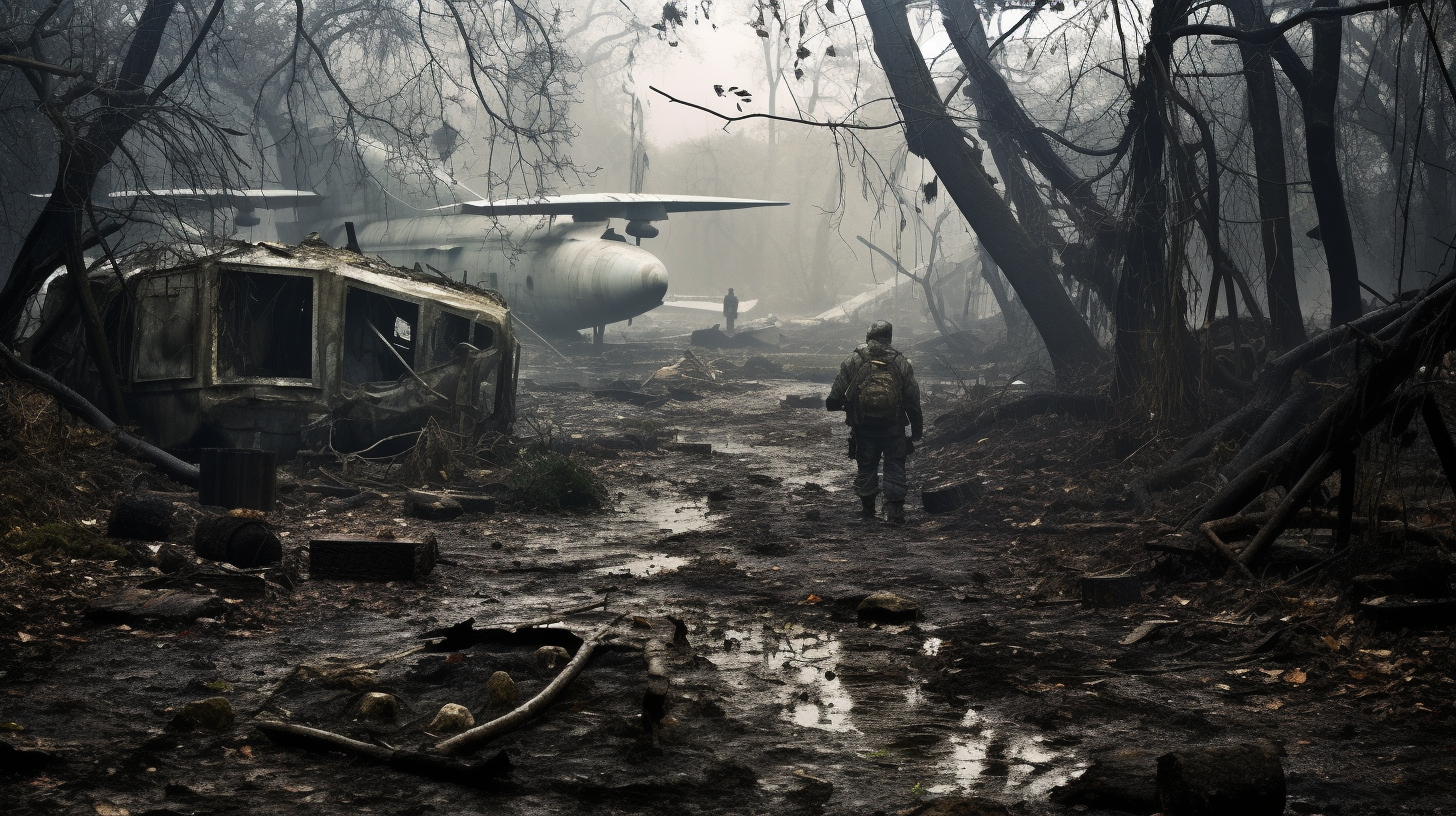In the penumbral gloom of what was once a thriving ecosystem, stands a dome. Its silvery surface reflects a waning sun suffocated by the grayish pallor of an unending smog curtain. Yet, beneath this bubble lies one of the last bastions of purity — a sanctuary of air. “The Last Breath” is not just an evocative title; it’s a harrowing reality for those huddled in the few remaining domes dotting our blighted Earth.
As cities became infernos, humanity sought respite in the subterranean; in Heat Havens, we tunneled towards the cool heart of the earth. Now, as air turns toxic and the relentless vice of pollution tightens, we pack into glassy spheres, hoarding clean air like dragons with gold.
The arcadian dome I visited is one of these neo-Edens, a stark contrast to the ashen landscape beyond its confines. Inside, birds chirp as they flit between bioengineered super-trees that suck pollutants with mechanical efficiency. People here live in a simulacrum of pre-apocalypse normalcy, their breaths a luxury afforded by high-tech air filtration systems that turn the wheel of life inside these life-supporting globes.
Yet, even as lungs fill with the manufactured purity of pre-industrial revolution air, there’s an unmistakable tension. Sanctuary dwellers are acutely aware of the thin membrane that separates them from a cruel outside where face masks have become permanent fixtures as essential as skin. This tension manifests in rituals I witnessed: a morning gaze at the choking horizon, a touch of gratefulness at every inhalation, and a silent promise to never take the invisible sustenance of clean air for granted.
But what of those left gasping beyond the domes’ seal? In this stark duality of existence, the underprivileged press their faces against transparent barriers, their breaths fogging up the glass as if trying to soak in the secondhand purity through osmosis. The air has been commodified, bartered in shady deals, and fiercely guarded. Scuffles at dome entrances are common as gatekeepers stand vigilant against the desperate tide of humanity yearning for a gulp of life-sustaining oxygen.
My guide, a solemn figure with eyes like smoky quartz, spoke of the Outside with a heavy heart. “It wasn’t supposed to be this way,” they whispered. “Air wasn’t meant to be rationed like this. We’ve become guardians of pockets of life in an otherwise dying world.” Their words were a chilling reminder of the choices that led us here — of opportunities missed and warnings ignored.
Indeed, these air sanctuaries are not without their paradoxes. They are marvels of human ingenuity, yet testify to a profound failure. They stand as beacons of survival, yet highlight a divide reminiscent of the starkest dystopian fiction. Within these bubbles, people play, love, and dream of clear skies, yet many do so with the guilt-ridden acknowledgment of those left behind.
The inevitable question then arises: How long can this last? The dome operates on a knife-edge, its existence dependent on an array of technologies and energy sources that are themselves threatened by the deteriorating conditions outside. Despite the genius behind their construction, sanctuaries are not a solution; they are a stopgap — a final, desperate grab at continuation amidst decline.
In laying out the stark reality of these final sanctuaries of air, “The Last Breath” is a stark tableau — a canvas painted with the hues of survival and despair. It serves not just to entertain but to ring alarm bells louder than ever before. It’s an immersive journey into what could very well be our terminus should we continue on our path of environmental apathy.
With each visit to these fragile oases, the mirror held up to society becomes less forgiving. The story of sanctuaries is one of human endurance, but it is also a dire prophecy written in the swirling pollutants of a world gasping for change. In this dystopian present, our greatest challenge is not merely to survive, but to learn, adapt, and alter the course of this environmental odyssey before the last bubble bursts and the final breath escapes our collective lips.
